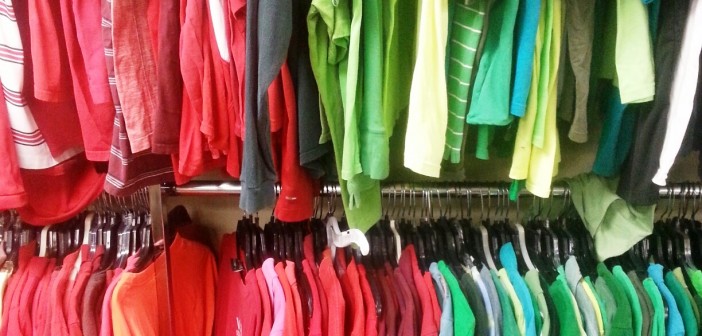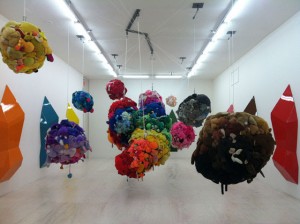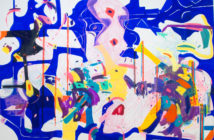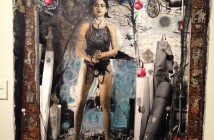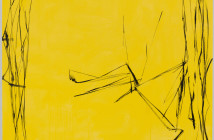Aside from Laurence Weiner’s Dewey Square mural, A TRANSLATION FROM ONE LANGUAGE TO ANOTHER, the best public art I’ve come across in Boston lately is something in the basement of Goodwill in Davis Square, Somerville. There against the back wall of the otherwise forlorn space, was a double- hung, forty foot rack of t- shirts meticulously arranged in a rainbow of colors. Within each hue is an improbable number “color shifts,” all fit snuggly into the dimensions of the space. It was hard not to see the “rainbow rack” as sort of guerilla, site-responsive installation.
A transportive art experience in the middle of Goodwill-- who knew? But there it is, crammed with shirts and associations. Mike Kelley’s work is the first to come to mind, specifically his own installations of amassed candy-colored consumer goods that trigger melancholy and unease. Like his stuffed- animal-and-crochet afghan sculpture, the shirts (on hangers, which fill them out to human dimensions) seem relatable and vulnerable.
But it’s not just an echo of Kelley at play in Goodwill’s racks. There’s also the setting and context to consider.
I think of the Goodwill t-shirt rack as a small scale gesture in the spirit of artists like Theaster Gates and Rick Lowe, who knit their respective communities together via “social practice” initiatives. Discovery of the rainbow-rack is part of the experience--there are no cues afforded by a white cube setting. And maybe this reveals a personal bias; at local galleries I usually end up liking what’s found in basement offices or back rooms. These more relaxed settings are a relief from the too often hermetically sealed, corporate treatment of contemporary art.
Is the rack intended as art? It is how I received it. At the very least it has been envisioned, and maintained, by a staff among which there must be an obsessive and consummate colorist and nifty formalist to boot. (Didn’t a lot of New York School artists get their start in retail display?)
There are smaller racks throughout the store with similarly considered and maintained color arrangements, but it’s something about the t-shirts, their sheer number, and the attention given the ubiquitous, common denominator of garments, that adds to the potency. Had it not been arranged as it was, I would never have looked at it twice, or even once.
Rainbows symbolize a certain kind of uplifting hope—whether via Judy Garland or LGBT flags. The rainbow t-shirt rack seems a generous, anonymous gesture offering visual pleasure (with a bass note of melancholy), in a most unlikely but perhaps most needed of places.

